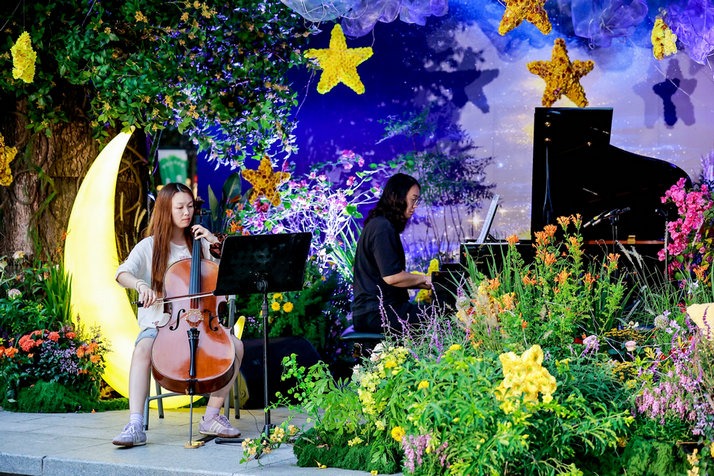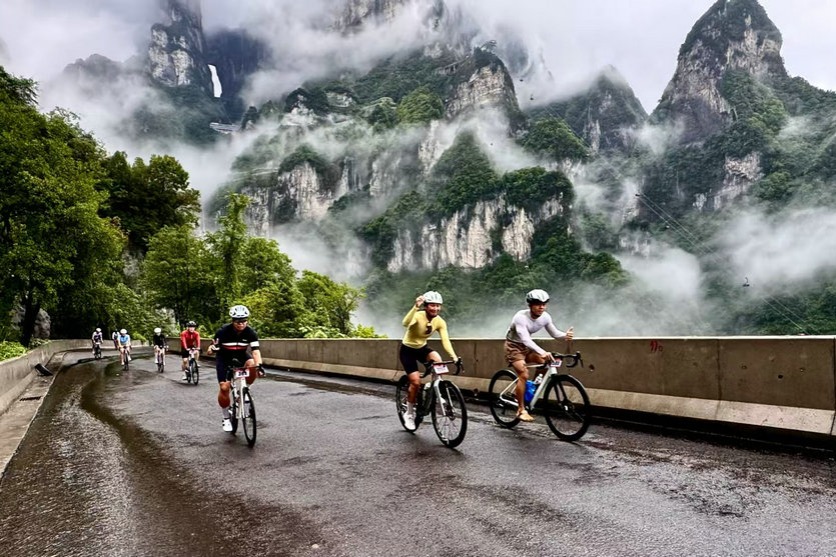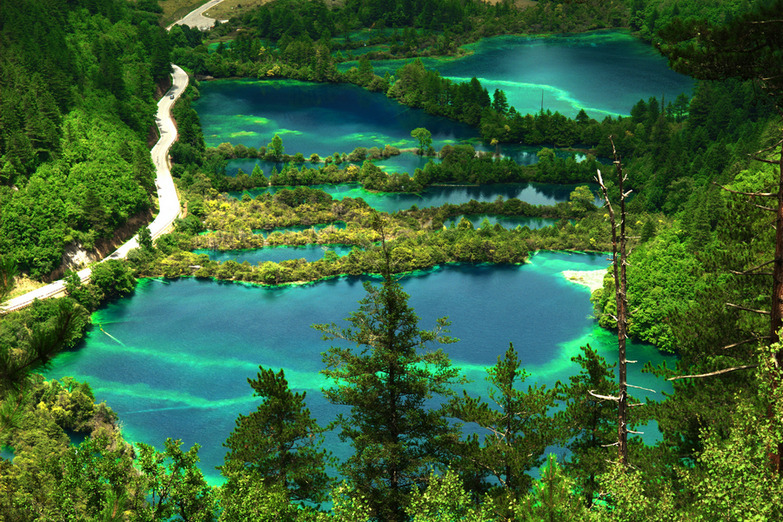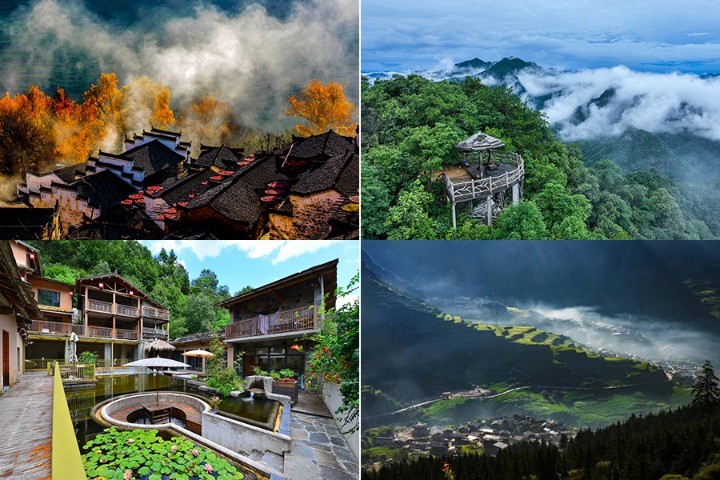Indonesia's islands compete for global spotlight
Rising number of travelers highlights both the promise and the challenges of tourism across the archipelago

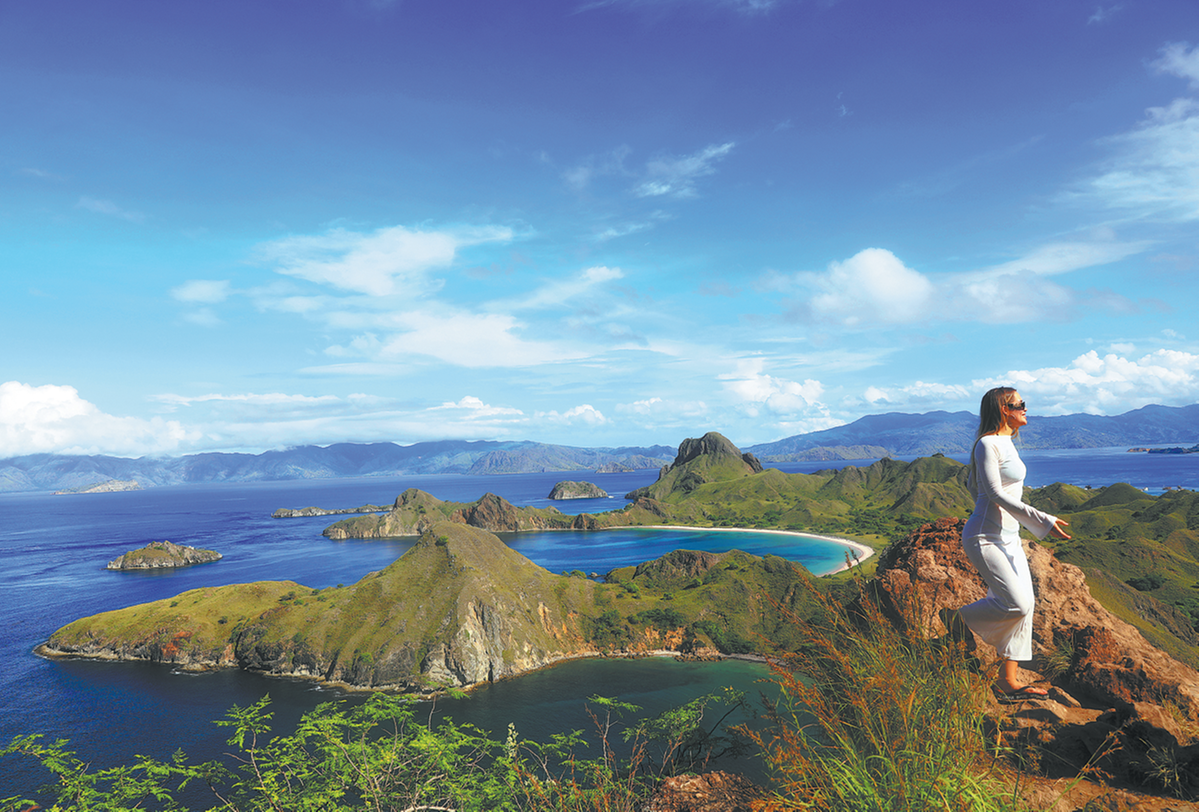
The memorable beauty of Indonesia's tourist sites lies not only in their striking landscapes but also in the ambience of exchanges among people, including the way locals connect with visitors as best as they can.
One such moment unfolded near Ijen Crater — popularly known as the "Sunrise of Java" — in Banyuwangi, East Java Province. Earlier this year, a video of a middle-aged villager living near the famous attraction went viral after she was seen warmly greeting Chinese visitors.
"This mango is 35,000 rupiah ($2) per kilogram. If you buy 3 kilos, it's 100,000 altogether," she said — in melodic Chinese.
"Zhege hen tian de, mingtian bijiao haochi ma," added the traditionally veiled fruit vendor, meaning: This one is very sweet, and tomorrow it will taste even better.
She is not alone. At the same spot, another video captured a man calling out in Chinese to tourists, inviting them to his stall. Promising sweet durians and mangosteens, he even joked that if the fruit was not sweet, it would be free.
The videos, which also circulated online, show a small group of Chinese visitors chatting with the fruit seller in astonishment, bursting into warm laughter when they learned she had taught herself Mandarin.
As China emerges as a leading source of global tourists, such viral moments — together with the rising number of Chinese holidaymakers to Indonesia — have reportedly encouraged villagers around Ijen and beyond to take up Mandarin.
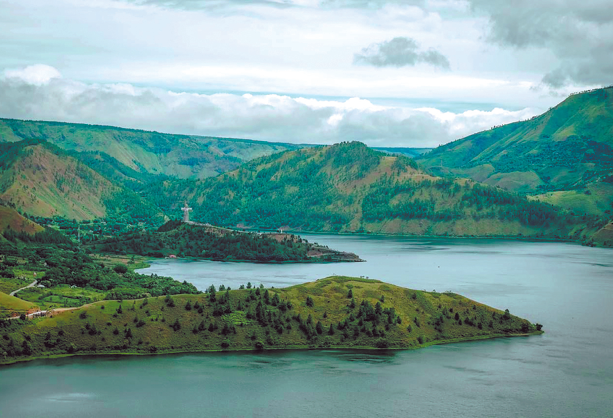
Ijen Crater, a complex of composite volcanoes about 300 kilometers southeast of Surabaya, the capital of East Java and Indonesia's second-largest city, has seen visitor numbers grow steadily in recent years. Alongside the increase, local villagers selling fruit and other goods at the site have worked hard to bridge the language gap with foreign travelers.
Today, Ijen stands among Java's must-visit places, drawing not only Southeast Asian and Chinese tourists but also visitors from France, the United States, Japan and Russia.
While Java and nearby Bali remain Indonesia's top islands for foreign tourists — with Chinese visitors currently leading arrivals in Bali, as they did even before the pandemic — other destinations across the country's 17,000 islands are gaining ground with their beautiful mountains, pristine beaches and rich cultural heritage.
The rise in foreign visitors to these outer islands has convinced more locals that speaking a foreign language has now become a necessity. Even in Bali, reports suggest there is still a shortage of local guides with adequate Chinese-language skills.
Paul Edmundus Talo, group managing director at Floressa Bali Tours, said demand is growing not only for local guides but also for restaurant employees, hotel workers and others with good English and Mandarin.
At the moment, many Chinese groups still prefer to bring their own Chinese-speaking guides, he said. "That's why they are especially happy when they meet locals who can talk with them in Chinese — it adds a human touch to their journey."
Talo, who began his tourism career after earning a bachelor's degree from a Jakarta tourism academy and later completed a doctorate in tourism economics, has witnessed these trends firsthand. His company, Floressa Bali Tours — based in Denpasar, the capital of Bali Province — serves both Indonesian and foreign holidaymakers, organizing trips to destinations across the archipelago, including the farthest islands beyond Bali and Java.
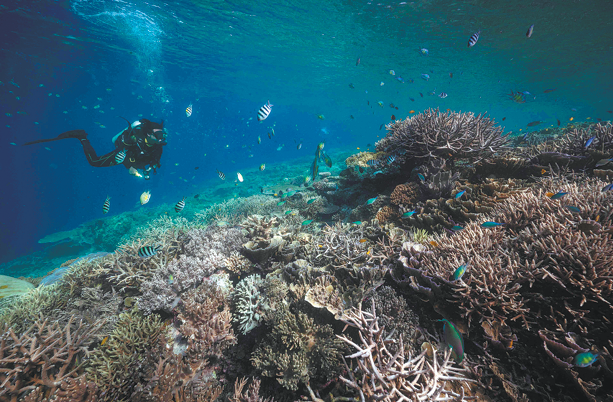
Komodo National Park
Many Chinese visitors, Talo said, have been exceptionally impressed by East Nusa Tenggara, where they can see the world's largest lizards at Komodo National Park on Komodo Island and dive at nearby top sites.
Although there are no direct international flights to Komodo, foreign travelers can get there by first flying to Labuan Bajo, on the western tip of Flores Island. The journey takes about 2.5 hours nonstop from Jakarta or 1.5 hours direct from Surabaya, East Java.
From Labuan Bajo, visitors continue by boat — either a standard vessel or a speedboat — which takes one to two hours to reach Komodo.
Accommodation in Labuan Bajo ranges from regular hotels to liveaboard boats, the latter becoming increasingly popular. Many tourists now go straight from the airport or seaport onto a boat to begin their adventure.
Komodo is one of 10 places the Indonesian government has promoted as "priority" tourist sites, while four others — among them Lake Toba in North Sumatra — have been designated as "super-priority "destinations.
Looking further east, Talo is planning to expand leisure and adventure trips to Raja Ampat and other destinations in Papua — Indonesia's easternmost region, which borders Papua New Guinea and draws the majority of its visitors from abroad.
Located in West Papua Province, Raja Ampat was named by The New York Times this year as one of the world's must-visit destinations, alongside the Galapagos Islands in Ecuador and Norway's Lofoten Islands.
According to the Raja Ampat Regency Office, tourist arrivals — mostly foreigners, including many from China — have steadily increased over the past five years.
Lying within the Coral Triangle off West Papua, Raja Ampat is made up of four main islands and some 1,800 smaller ones, most of them uninhabited. The region is famed for its pristine turquoise waters and marine biodiversity.
A nonstop passenger flight from Jakarta to Sorong takes about four hours. From Sorong, travelers can continue on to Raja Ampat by standard or high-speed boat, reaching the islands in one to two hours.
There are also flights from Jakarta to Sorong with stopovers in Makassar, South Sulawesi, or in Manado, the provincial capital of North Sulawesi. Since there are no direct international flights to Sorong yet, Chinese tourists often fly directly to Manado and then connect to Sorong if Raja Ampat is their main destination.
Currently, three airlines serve the China-Manado route: TransNusa, China Southern Airlines and Sichuan Airlines. Manado itself has become a must-visit stop for many Chinese holidaymakers, offering picturesque hillsides and beaches, notably in Likupang and Bunaken, both known for their natural beauty and rich marine life.
Welcoming tourists
Raja Ampat authorities expect to welcome around 45,000 tourists this year, said Ellen Risamasu, head of the Raja Ampat Tourism Office, as reported by tempo.co. She acknowledged, however, that the destination remains costly for many travelers.
Even so, the projected figure is more than double the 19,800 visitors recorded in 2023 — though only about half of last year's total.
For Jakarta resident Anika Soertjiady, the higher costs are justified. "Raja Ampat's clean and blue seawaters are really incredible for diving, and it is also a strongly recommended place for seafood lovers," she said, while showing photos of beautifully built bungalows on stilts.
For foreign holidaymakers seeking destinations not too far from Jakarta, Lampung Province in southern Sumatra is well worth a visit. At Way Kambas National Park, visitors can see endangered Asian elephants in their natural habitat.
A flight from Jakarta to the provincial capital, Bandar Lampung, takes just 55 minutes. From the airport, travelers can rent a car and reach Way Kambas in about two hours.
I Putu Winastra, head of the Bali chapter of the Association of the Indonesian Tours and Travel Agencies, said the government's priority should not only be on developing attractions but also on improving access.
"In tourism, it's not the destination — it's connectivity that matters most," Winastra said.
No matter how impressive the attractions are, without direct flights or strong transport links, nobody comes, he said.
He recalled that before the pandemic, Bali saw a surge in chartered flights, including many from China, which greatly boosted arrivals.
The writer is a freelance journalist for China Daily.

















